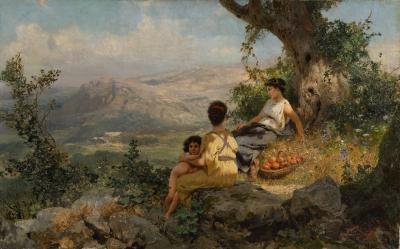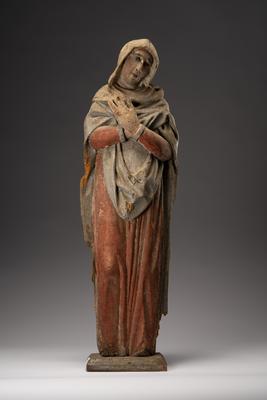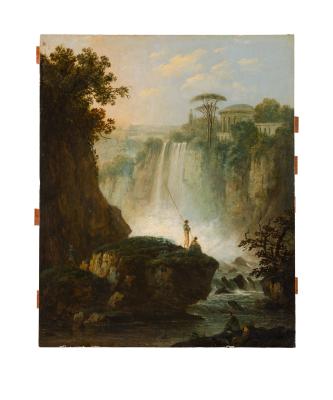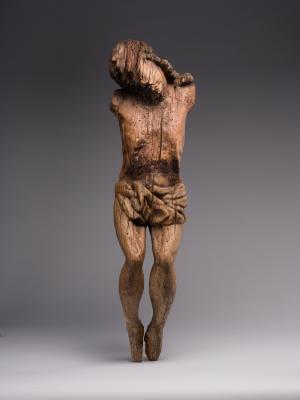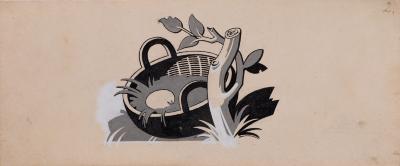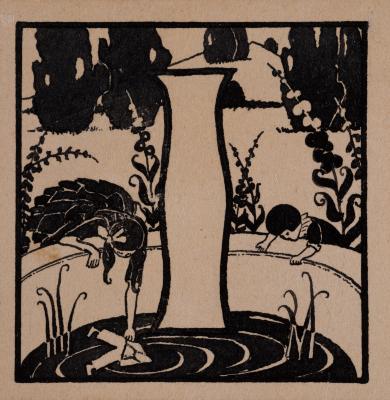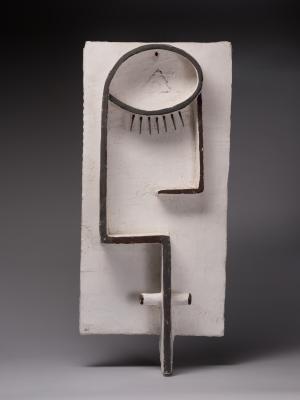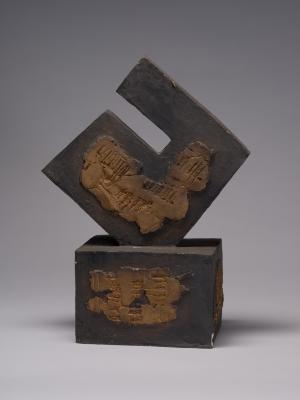The composition is known in three variants. The first was performed for the album Raccolta di Cinquanta Costumi Pittoreschi incisi di acqua forte (Collection of Fifty Picturesque Costumes), published in 1809 in Rome. The next version, similar to the so-called Lviv one, was posted in the album Nuova Raccolta di Cinquanta Costumi Pittoreschi (New Collection of Fifty Picturesque Costumes) published by Giovanni Scudellari in Rome in 1817. One more version of this composition is known since 1815, in which a boy was depicted instead of a girl. All known versions differ from the Lviv one because they are not painted with watercolours. In the foreground, in the centre, one can see three figures. A woman in typical festive clothing of southern Italy is depicted with her daughter carrying the Easter cakes in their baskets to the church. They stopped at a hermit sitting near the monastery gate, and the woman gave him alms. The grey-bearded Capuchin hermit and the woman look warmly into each other's eyes, though the girl is a little excited, looking closely at the hermit and holding her mother's skirt. The action takes place in a winding street in the suburbs of Rome, in the town of Frascati, where the media areas are surrounded by high stone walls, behind which one can see the greenery of trees and grapes. The artist used the deep blue colour depicting a woman's festive waistcoat, a girl's skirt, a cross over a bowl for washing hands in front of the gate doorway, and a niche in an aedicule over another gate in the background on the left. The artist highlighted the figure of the Capuchin brother in a rich brown colour. The hermit is the main character of the work. In contrast to the first version of 1809, where the hermit is depicted as a young man, B. Pinelli created a psychological image of an older and wiser man in this work.










